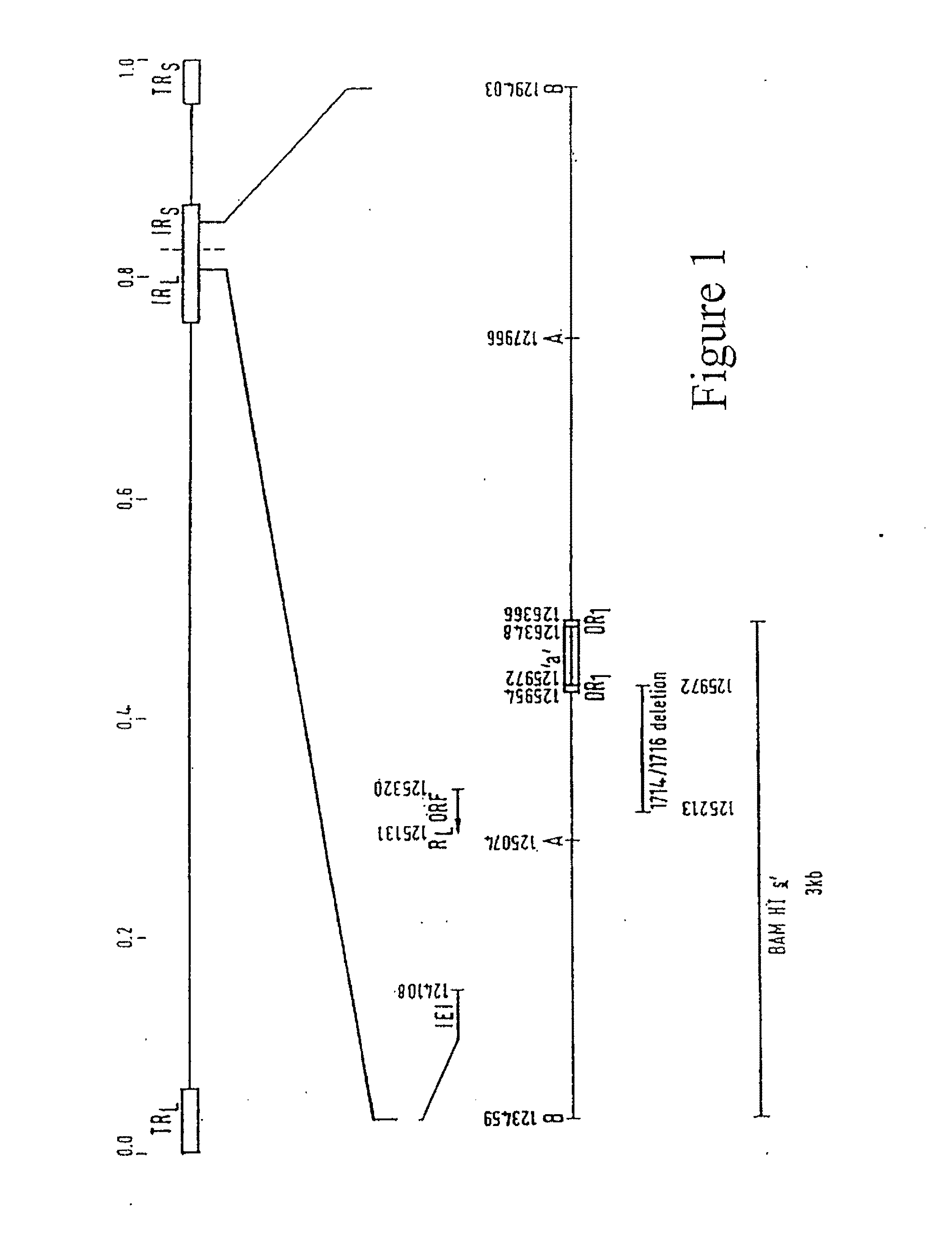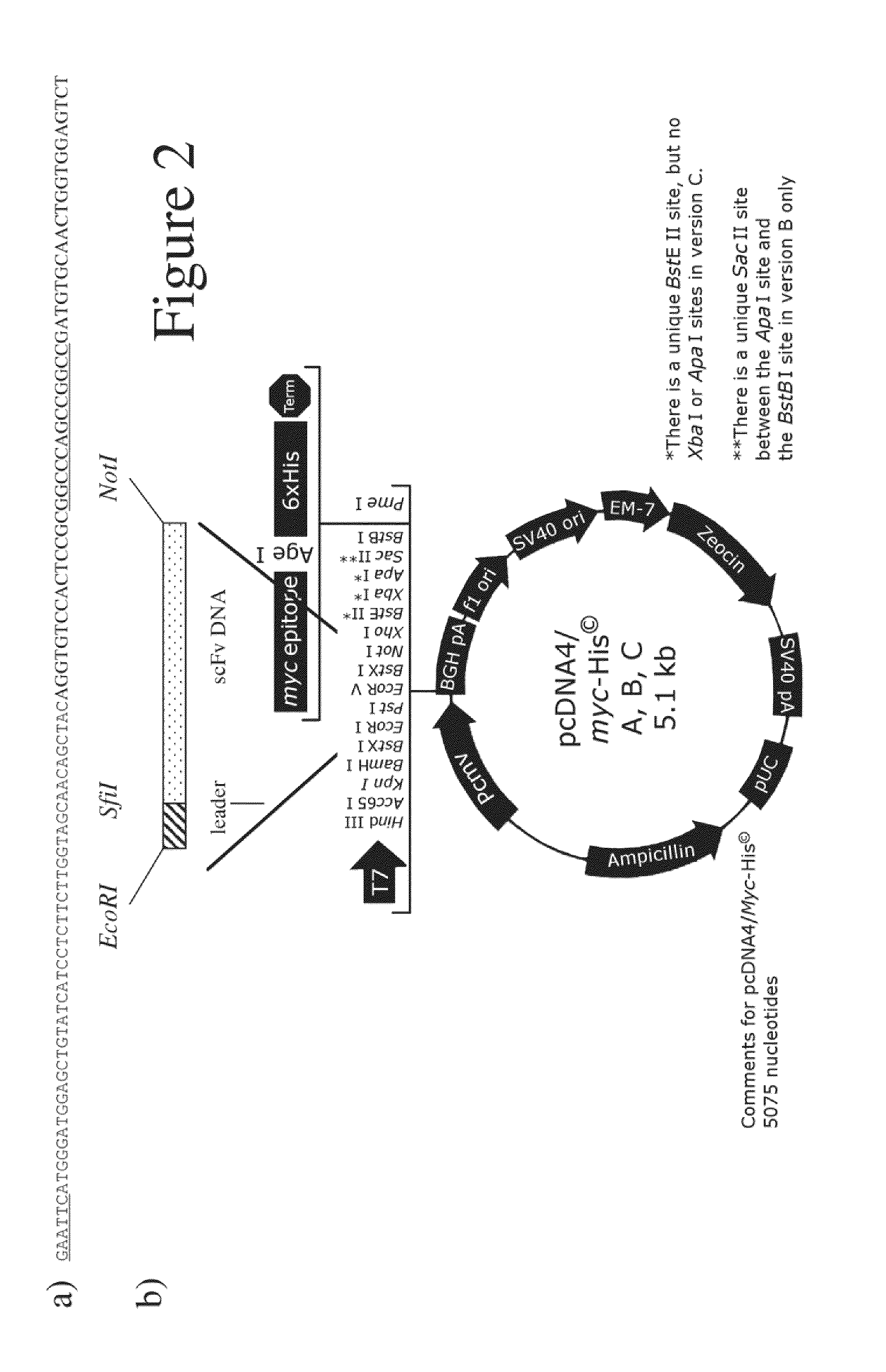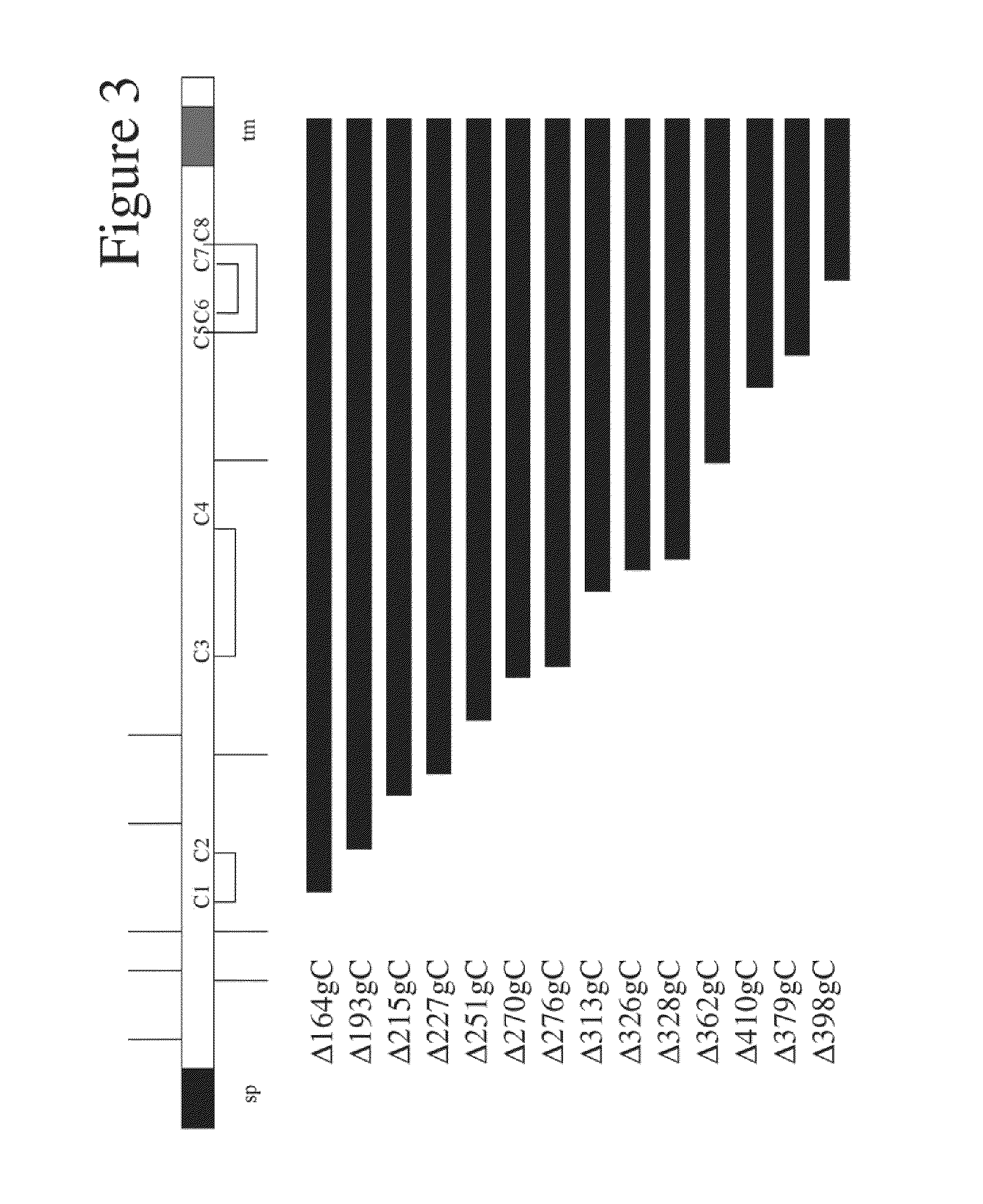Herpes Simplex Virus Complex
a technology of herpes simplex virus and complex, which is applied in the direction of virus peptides, biochemistry apparatus and processes, pharmaceutical non-active ingredients, etc., can solve the problems of tumour cells being infected less efficiently in vivo, limitations of their use, and death of cells by lysis
- Summary
- Abstract
- Description
- Claims
- Application Information
AI Technical Summary
Benefits of technology
Problems solved by technology
Method used
Image
Examples
example 2
Infection of BHK Cells by HSV-1 Incorporating ScFv-Glycoprotein Fusion Proteins
[0052]The ability of the viruses incorporating ScFv-glycoprotein fusion (as produced in example 1) to infect BHK cells is analysed by single-step growth experiments and compared with 1716. The tropism of these scFv-glycoprotein fusion viruses is investigated using CHO cells that constitutively express CD55. Penetration of the viruses into CHO cells is confirmed using GFP reporter gene analysis.
[0053]Results in CHO cells will identify the factors that allow antibody-mediated viral infection and recombinant viruses will be created by cloning the appropriate scFv / glycoprotein DNA into the viral genome. The genomes of these viruses can be further modified by deletion or inactivation of glycoprotein genes such as gD, gC and gB using for example, homologous recombination.
[0054]By accumulating monoclonal antibodies to tumour specific antigens such as CEA or CD20, it is then possible to construct a panel of oncol...
PUM
| Property | Measurement | Unit |
|---|---|---|
| tumor surface antigen | aaaaa | aaaaa |
| cell surface | aaaaa | aaaaa |
| size | aaaaa | aaaaa |
Abstract
Description
Claims
Application Information
 Login to View More
Login to View More - R&D
- Intellectual Property
- Life Sciences
- Materials
- Tech Scout
- Unparalleled Data Quality
- Higher Quality Content
- 60% Fewer Hallucinations
Browse by: Latest US Patents, China's latest patents, Technical Efficacy Thesaurus, Application Domain, Technology Topic, Popular Technical Reports.
© 2025 PatSnap. All rights reserved.Legal|Privacy policy|Modern Slavery Act Transparency Statement|Sitemap|About US| Contact US: help@patsnap.com



